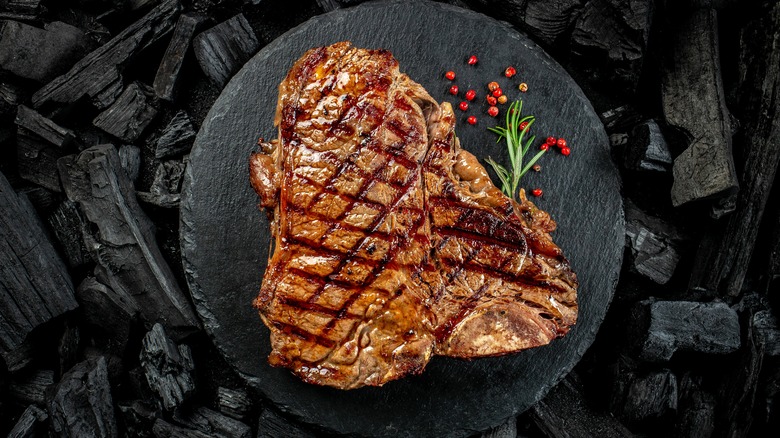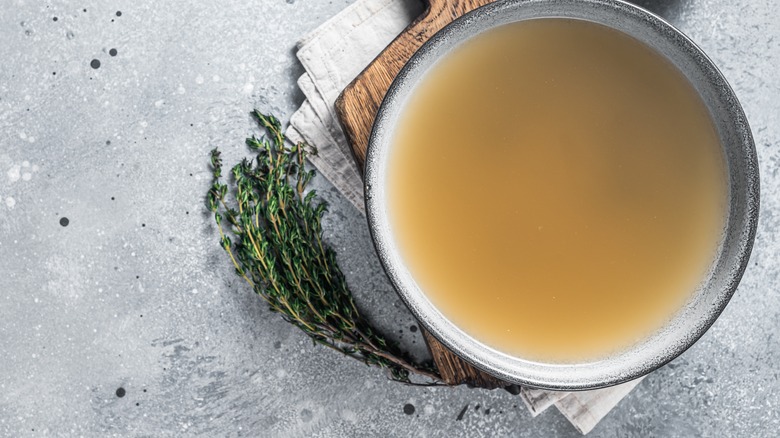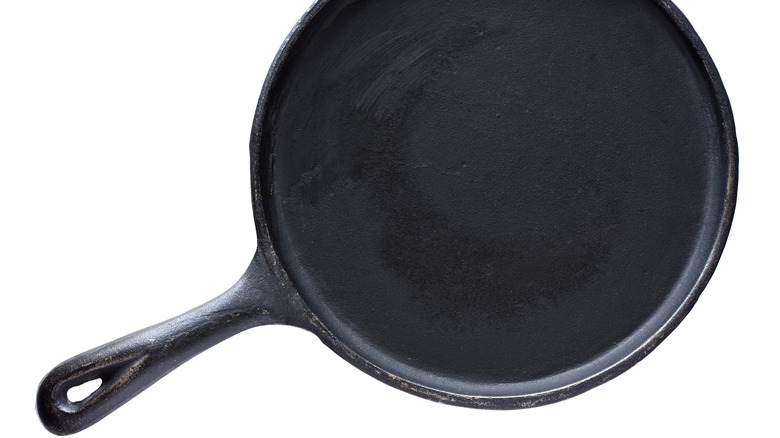The Broth Tip For Effortlessly Reheating Steak
For many, it can be hard to imagine finishing a meal with any steak left on their plate. As surprising as it might be, it does happen. Maybe the sides were just too good to pass up, or the porterhouse was even bigger than imagined. Either way, many people might aim to polish off their steak at the expense of leaving other food unfinished because it's just not the same when it's warmed up the next day. Not only can the perfectly cooked cut easily become well done during the reheating process, but meat is well-known for losing its juices when it's warmed back up.
"If you order a steak rare or medium rare at a restaurant, you'll have a hard time keeping it that temperature when reheating," Tim Cardenas, a sous chef at Caldo Verde in Los Angeles, told Insider — along with his handy tips on how to reheat steak.
Keep it moist
While maintaining the exact temperature might not be possible, you can still reheat your beautifully seared steak to a similar juiciness the next day. One of the best ways to achieve this is by using a bit of broth or stock. By doing so, you'll be able to lock in some extra moisture even as it cooks for the second time.
But first, be sure to remove your leftover steak from the refrigerator about 30 minutes ahead of time. It's important to let it get closer to room temperature before reheating it to avoid overcooking. Make sure to reserve any juices that have escaped the meat overnight as well.
Naturally, beef broth adds the most consistent flavor, but vegetable or chicken broth could work in a pinch. It can also help to think ahead when cooking steak at home and consider saving some of the juices from when you deglaze the pan if reheating leftovers is likely.
The best methods
One of the easiest ways to reheat steak is the same method often used to cook it in the first place — on the stovetop. To do so, break out your favorite non-stick skillet and warm it over medium heat with about 1 ½ ounces of broth. Don't use high heat, as the already-cooked steak will inevitably end up overdone. Once the broth has a good simmer going, add your pre-cooked steak and let it warm up for a few minutes on one side before flipping it over to the other for a couple more minutes.
Covering the skillet with a lid will also help lock in some of that moisture. And, of course, be careful not to let it stay on the heat too long — an internal temperature of 110 degrees will do. A little broth on top can also do wonders when reheating steak in the oven (or even the microwave, if absolutely necessary). Whichever method you choose, that extra moisture will go a long way toward giving that leftover steak a second life!


